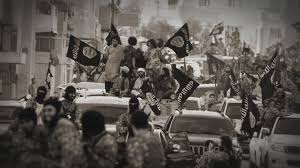By Andrew deGrandpre and Stephen Losey, Air Force Times–
American warplanes unleashed a massive attack Wednesday on at least two Islamic State training camps in Libya, killing an estimated 80 militants who fled the group’s crumbling stronghold there, U.S officials said.
The airstrikes occurred in a remote area approximately 30 miles southwest of Sirte, a city along the Mediterranean coast that’s been a focus for U.S. forces since at least February.
The operation was carried out by two Air Force B-2 bombers and an unspecified number of unmanned MQ-9 Reapers armed with Hellfire missiles, Air Force Secretary Deborah Lee James told Air Force Times on Thursday morning. An estimated 100 Islamic State fighters were targeted and approximately 100 weapons were released, James said, adding that the mission was coordinated with U.S. special operations personnel working with local allies.
Speaking at the Pentagon on Thursday, Defense Secretary Ash Carter indicated the Islamic State’s offshoot in Libya was believed to be plotting terror attacks in Europe and may be connected to past terror attacks there.
“The militants were seen immediately beforehand carrying weapons, wearing tactical vests, carrying mortars, and standing in formation,” according to a U.S. defense who spoke on the condition of anonymity.
Surveillance footage displayed at the Pentagon on Thursday showed what officials said were Islamic State personnel loading vehicles with rocket propelled grenades, shells and other military equipment. Additional footage released by the U.S. military showed a massive fireball resulting from one of the airstrikes.
No women or children were present, and there were no reports of civilian casualties, officials noted.
Cook declined to say whether any Islamic State leaders, to whom the Pentagon refers as “high value targets,” were among the dead.
“The fighters training in these camps posed a security risk to Libya, to its neighbors, to our allies in Africa and Europe, and to the United States and its interests,” he said. “Our assessment of these strikes is ongoing, but the initial analysis … is that these strikes were successful in destroying these camps.”
ISIL is another name for the Islamic State.
“There’s a civil war in Libya,” Carter said. “And that fundamentally is the reason why ISIL is able to get a foothold there. The Libyans don’t like foreigners. And I think if they could settle their own internal differences, which is a political and diplomatic matter, they themselves would make quick work of ISIL.”
Located in north Africa, Libya emerged last February as a new front in the United States’ war on ISIS, which is concentrated mostly in Iraq and Syria but has developed followings in Egypt, Afghanistan and throughout pockets of Southeast Asia. Military commanders dubbed the Libya mission Operation Odyssey Dawn, beginning with a barrage of airstrikes in and around Sirte. At the time, U.S. intelligence estimates suggested ISIS had as many as 6,000 fighters in the region.
Those numbers have steadily fallen, though there’s no current estimate, Cook said.
B-2 bombers were chosen for the mission in Libya, officials said, because they can carry a large number and variety of weapons. (Air Force photo)
The U.S. has conducted more than 500 airstrikes in Libya since last winter. The last reported U.S. activity there occurred in December, when a contingent of Navy ships carrying Marine attack jets and helicopters left the Mediterranean and returned home.
The Marines used AV-8B Harriers and AH-1W Super Cobras over a period of months to provide close air support for U.S. allies battling Islamic State fighters in Sirte. In addition, a small but unspecified number of U.S. personnel have continued to operate inside Libya, coordinating with local ground forces on the ground.
In December, officials with U.S. Africa Command indicated that, despite suffering heavy losses in Sirte, the Islamic State retained a strong presence in Libya with militants having spread throughout the country and believed to be hiding among the population.


Leave A Comment
You must be logged in to post a comment.